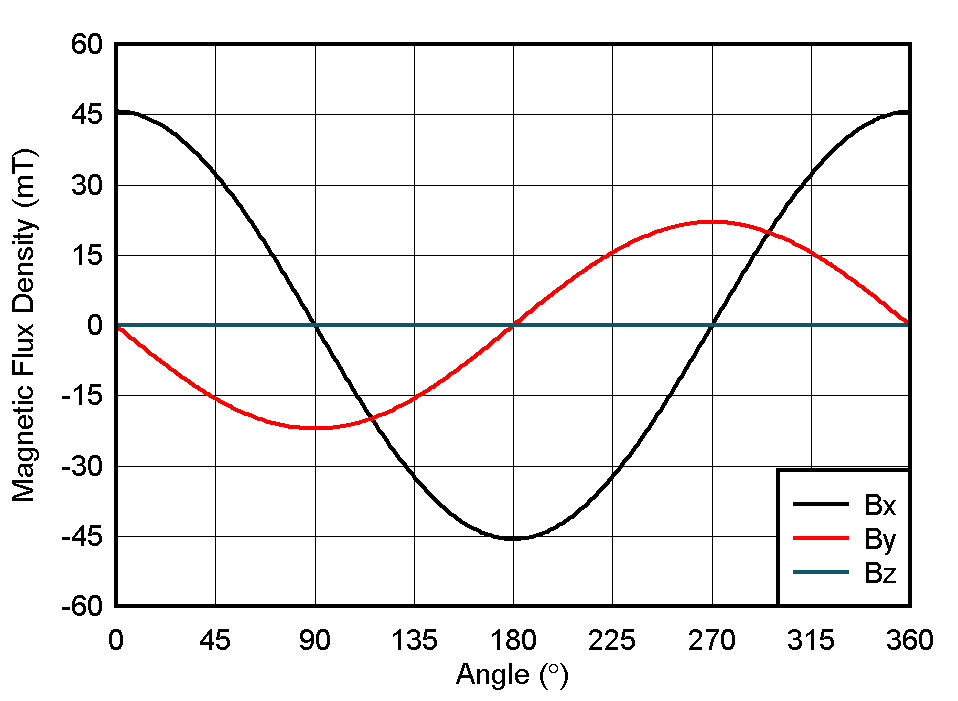SBAA463A january 2021 – april 2023 TMAG5170 , TMAG5170-Q1 , TMAG5170D-Q1 , TMAG5173-Q1 , TMAG5273
2 Benefit of Multi-Axis Sensors
A novel approach to minimize the challenges discussed related to one-dimensional (1D) sensors is to integrate multiple axes of sensitivity into a single device. In the example before, only a single component of the magnetic field was observed at each sensor.
 Figure 2-1 3D Sensor In Plane
Figure 2-1 3D Sensor In PlaneIf one sensor were to capture the X, Y, and Z components of the B-Field vector at the same location initially examined, we could reduce the device count and resolve uncertainty related to the mechanical assembly. Using just one such sensor at the same range as explored in the 1D case, we observe the fields shown in Figure 2-2.
 Figure 2-2 Magnetic Flux Density vs Angle for
a 3D In-Plane Sensor
Figure 2-2 Magnetic Flux Density vs Angle for
a 3D In-Plane SensorNotice in this position, the X and Y components again share a sine and cosine relationship. The Z component remains zero due to the sensor location being perfectly aligned to the magnet. Given the natural 90º phase shift between the X and Y inputs, a sensor with all three axes of sensitivity such as TMAG5170, makes a good candidate to detect the angular position of a rotating magnet regardless of package orientation. Alternatively, the TMAG5170D-Q1 is a dual-die version of the TMAG5170 that can be used if redundancy in the system is required.
As shown, the peak magnitudes are unequal, which we discussed to be a significant source of error in the two-sensor approach. Fortunately, the TMAG5170 device offers a simple solution to obtain peak matching which is explored in detail in this document.